Welcome to Magnor
Magnor has a rich cultural and industrial heritage, which we want more people to get to know. Vestre’s goal is to help turn Magnor into an international brand by linking the area’s proud history to tomorrow's sustainable solutions.
The little town of Magnor is located in Eidskog municipality in the southern part of Norway’s Innlandet County. Oslo is just 110 km away, and Sweden just a stone’s throw. Kongsvinger is the nearest major town, with 18,000 inhabitants, while Arvika in Sweden has a population of 26,000. This proximity to Sweden is one of the things that delights us about Magnor. For we believe in Scandinavian industrial collaboration and exploiting the strengths of each individual country.
We will be in good company in Magnor. Trade and industry are among Eidskog municipality's most important business sectors. Norway is connected to Sweden and the rest of the EU via the Rv2 road through Magnor. After Svinesund, this is the busiest border crossing between Norway and Sweden, with over 8,000 vehicles passing each day.
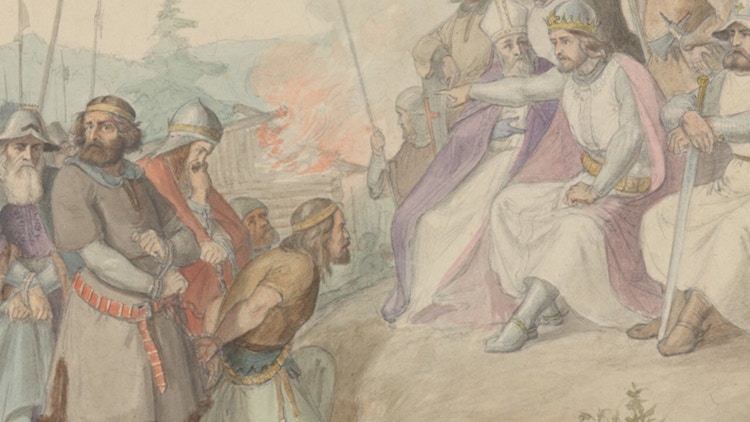
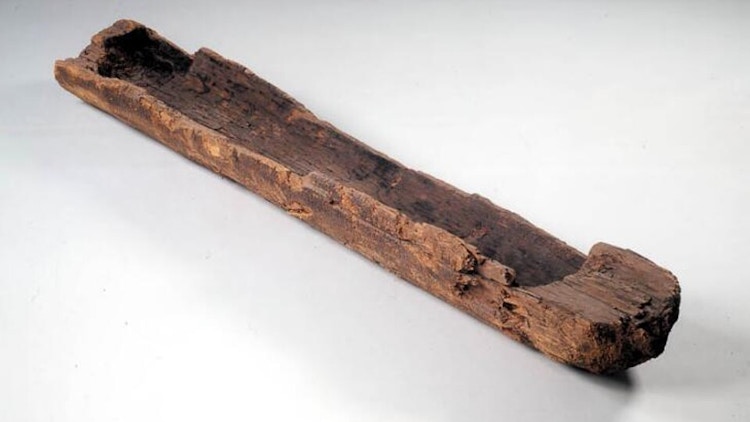
History
Magnor has been a centre for travel, production and trade for more than 7,000 years. Forest dwellers and people travelling on foot, by horse or boat along the Vrangselv river settled here. Archaeologists have found flint arrowheads from 800 years BCE, and hunting pits and log boats from 400 BCE, confirming that the area was populated at an early stage. In 871 CE, Norway’s Harald Fairhair took neighbouring Värmland from King Erik of Sweden, and so commenced several centuries of Norwegian dominion over this whole region.
Accompanied by several thousand warriors, King Olaf II Haraldson (later to become St Olaf) travelled through the forests bordering the Vrangselv river in 1028. After he was killed at the Battle of Stiklestad in 1030, pilgrimages to Nidaros (as Trondheim was then called) began almost immediately. People wanted to see the holy king, and many people came from all across Europe on summer or winter roads that passed through Magnor. The old pilgrim route has recently been restored and reopened.
Värmland was not returned to Sweden until 1389, when Queen Margareta took power. Several centuries later, in 1610, a group of early immigrants arrived in Norway via Magnor. They were Forest Finns, known for their slash and burn agriculture. They burned patches of forest to create fertile soil in which to grow rye.
There have always been good relations between people on both sides of the border in this area. It is said that when Sweden's General Carl Gustav Armfeldt was assembling an army to attack Norway in 1808, he refused to enrol men from Värmland, because there were so many with wives from across the border. On the Norwegian side, the farmers of Eidskog were reluctant to go to war against their good neighbours in Värmland. The first post road and international telephone line between Stockholm and Oslo also ran through Magnor.
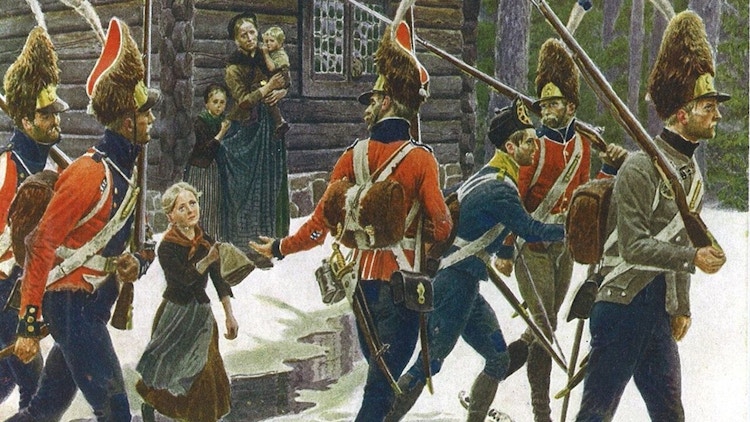
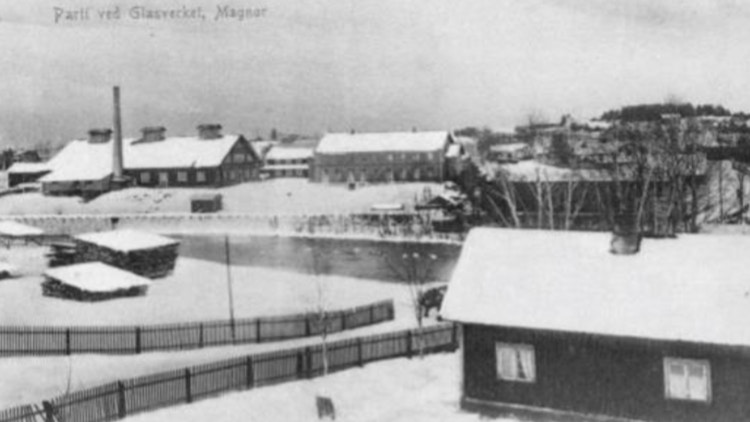
Industry
Thanks to its strategic location, Eidskog is mentioned in Snorre Sturlason’s sagas. Over the centuries, many important people have travelled through it. Magnor is a place name which often crops up in travel literature written in many different languages. Magnor was by no means unknown in the wider world during the 19th century.
In 1833, the first of many ironworks in Eidskog began producing nails, and in the 1850 tile production was established in Magnor. Since Eidskog was unable to use the Glomma river to float logs downstream, the timber had to be processed at local sawmills, with cut planks being transported by road to the nearest railway station. In 1871, the Norwegian capital, then called Christiania, and Sweden's capital Stockholm were connected via a railway line. Norway’s rail link to the rest of Europe still passes through Magnor. The railway created new jobs, because timber, nails, tiles, and other export goods could reach transhipment ports more quickly.
By the end of the 19th century, Magnor was a well-established industrial community, with Europe's largest clay pipe factory, a mill, tile works, sawmill, iron foundry, glassworks and other light industry. Vestre wants to achieve something akin to the hand-forged horseshoes from Magnor, which were, in their day, famed for their quality and made the little border town a household name nationwide.
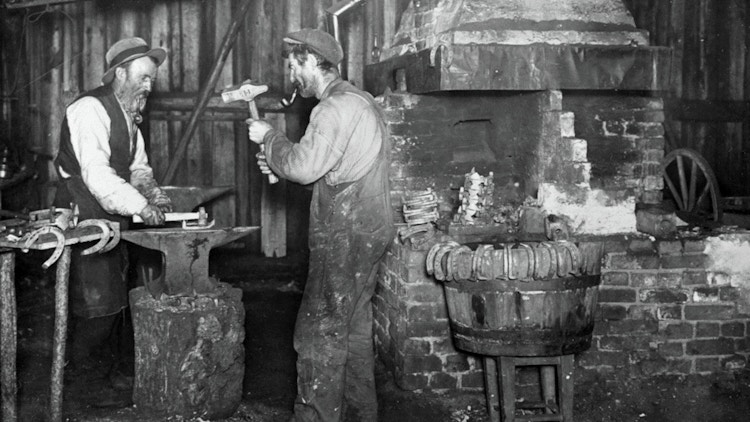
Peace monument
In 1914, the Peace Monument was unveiled at Magnor to celebrate 100 years of peace between Norway and Sweden. The architect, Lars J. Lehming from Stockholm had been commissioned to design it, which he did free of charge. The monument comprises two massive granite pillars placed on a single solid plinth. At the top, two people stand facing each other. They are holding hands, and between them they carry a sheaf of corn. They are Norway and Sweden. Two free and independent peoples with the same background, united in friendship, peace, and culture. The monument expresses exactly what Vestre is working to achieve – close cooperation between two countries which have their differences, but which perfectly complement each other.
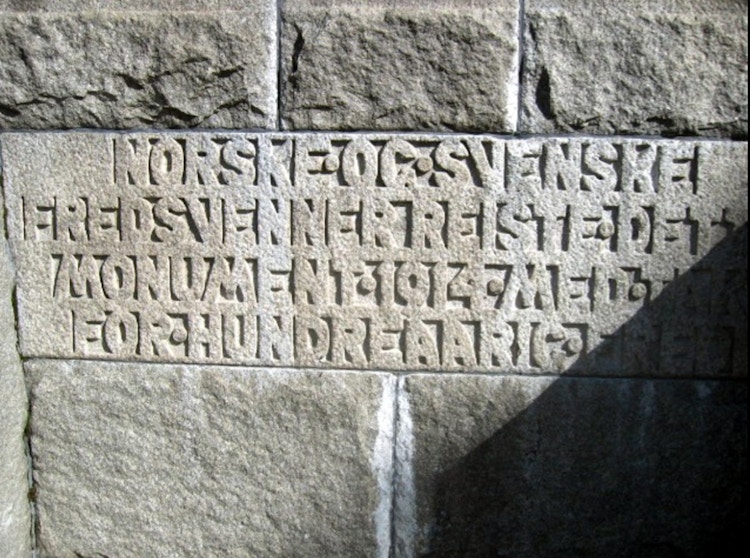
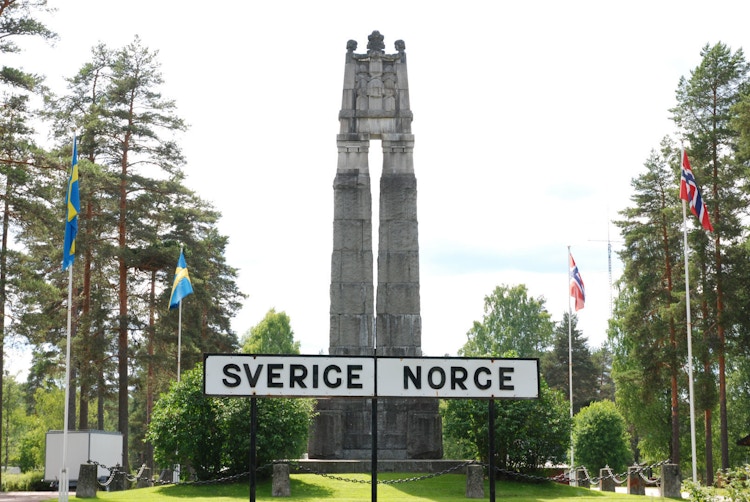
When Germany invaded Norway in 1940, the border with Sweden was closed. For people on both sides, it was difficult to be separated from friends and family for five long years. However, through the forests of Eidskog, vast quantities of intelligence information, illegal letters and publications were smuggled back and forth between Oslo and Stockholm. Willy Brandt, who was to go on to become Chancellor of West Germany, fled past the Peace Monument on the border, as did at least 6,000 other refugees. When the radio from London announced the unconditional surrender of Nazi Germany at 6.30pm on 7 May 1945, people streamed to the Peace Monument in droves. They were overjoyed to be reunited. Norwegian children were given buns and fizzy drinks from Sweden, and old friends and relatives could finally get together after five years of oppression and separation.
In 1959, a cultural centre was established on the border at Magnor by Norwegian prime minister Einar Gerhardsen and his Swedish counterpart Tage Erlander, both social democrats. It was named Morokulien by Swedish radio announcer Lennart Hyland and Norway's Randi Kolstad in connection with a radio programme whose name roughly translates as “Completely Out of Bounds”. Morokulien is an amalgamation of the Norwegian and Swedish words for fun (“moro” and “kul” respectively).
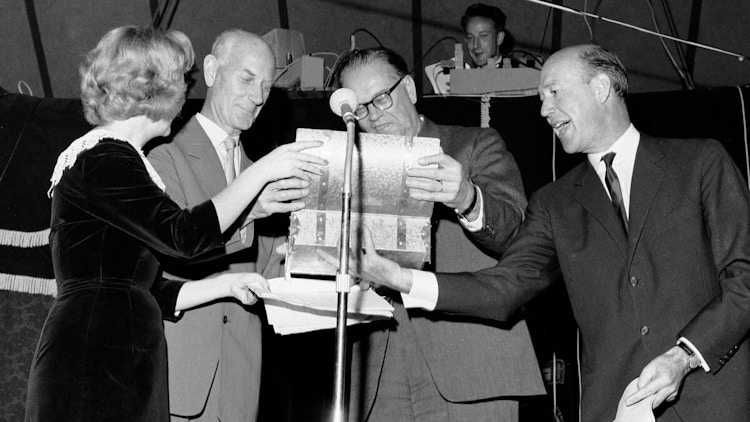
Hans Børli
Hans Børli was born in Eidskog in 1918. It gradually became clear that he was an extremely talented lyricist. He went on to become one of Norway's most famous poets. Børli spent his entire professional life as a lumberjack and was a major inspiration for the country's labour movement. His poems sprang from the forest and the life there, which is why he has been dubbed the “forest poet”. However, he was also concerned about politics and existential questions of faith and doubt. Børli received several awards, and he was granted a war pension for his help in guiding people across the border to safety in Sweden during WWII.